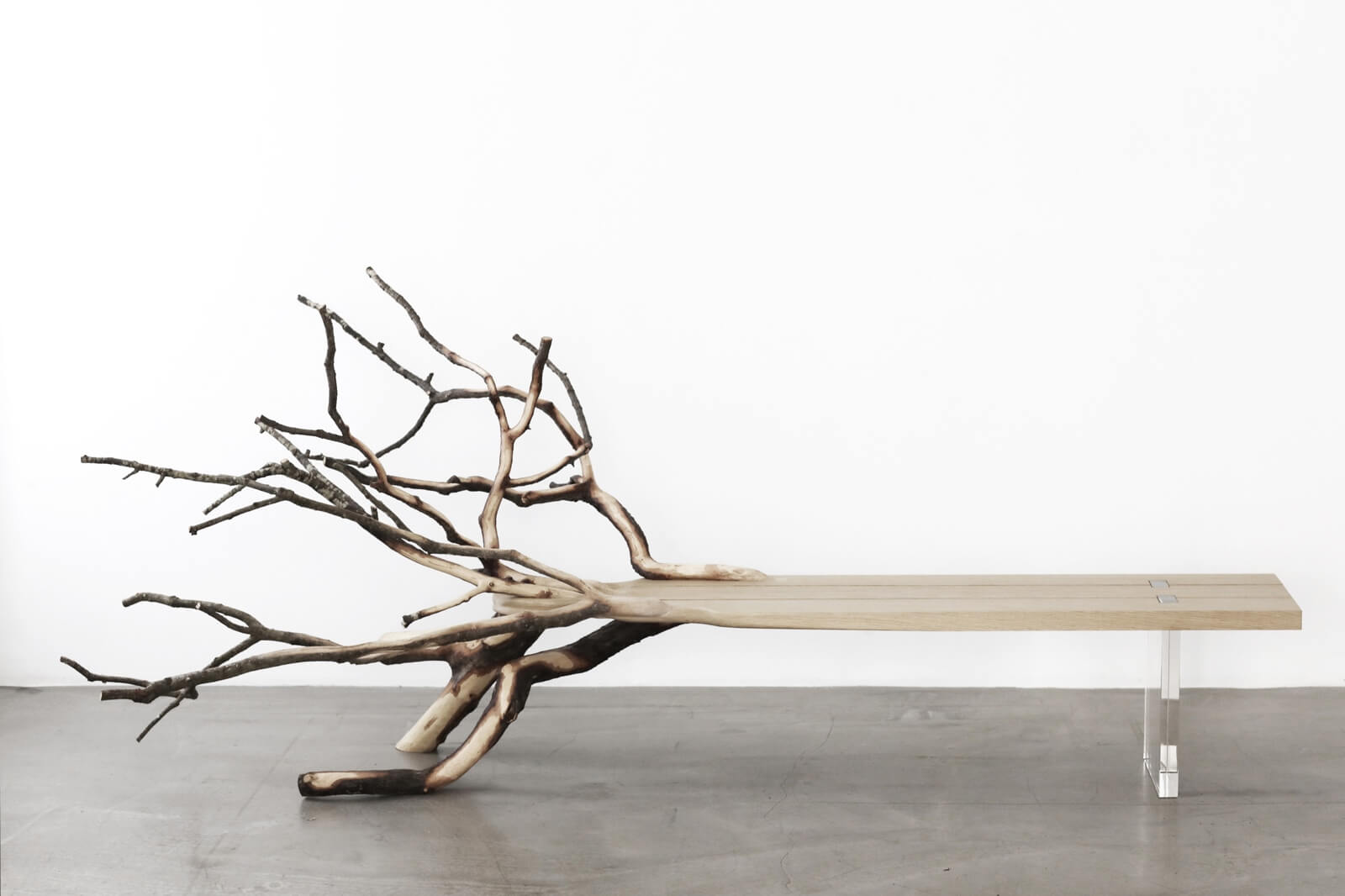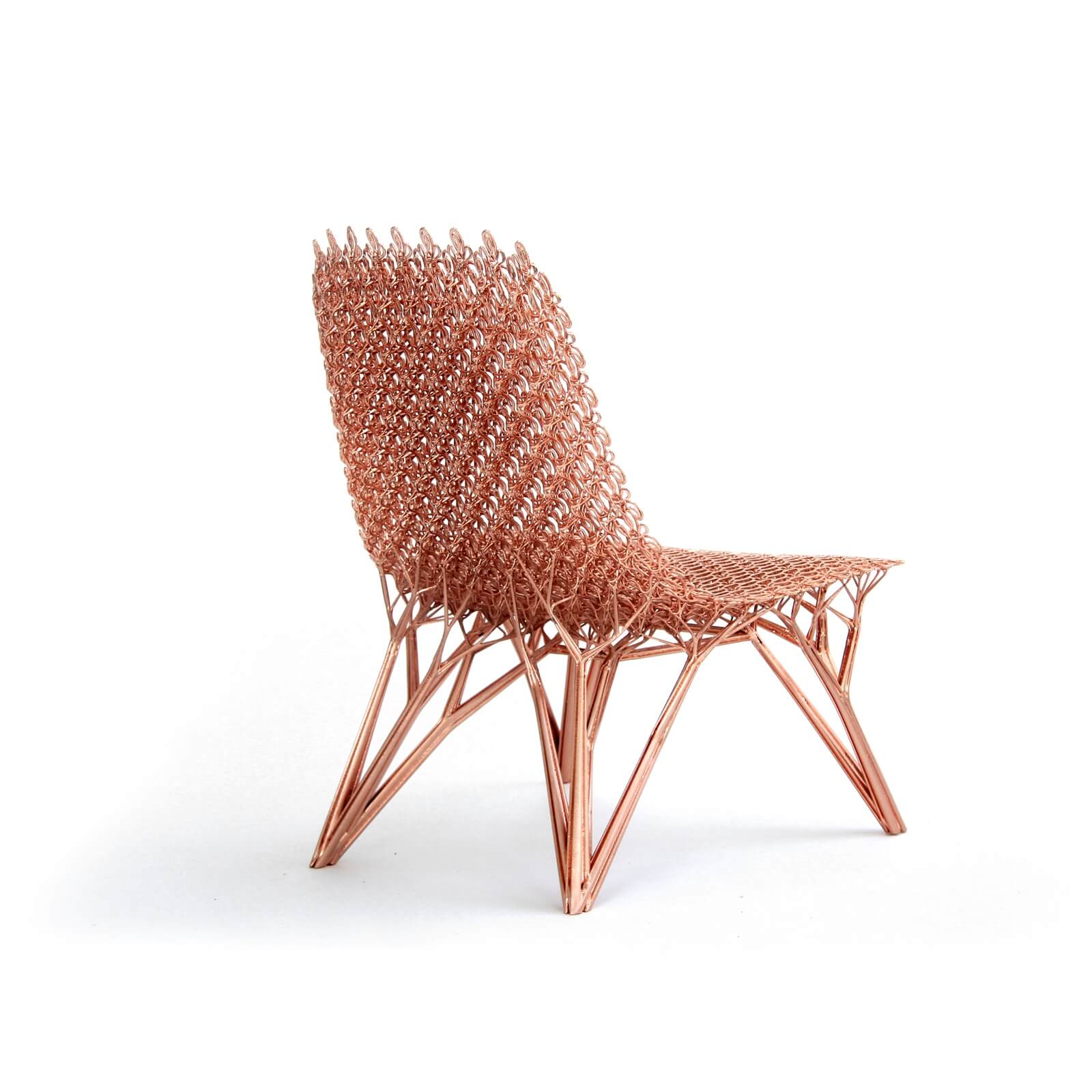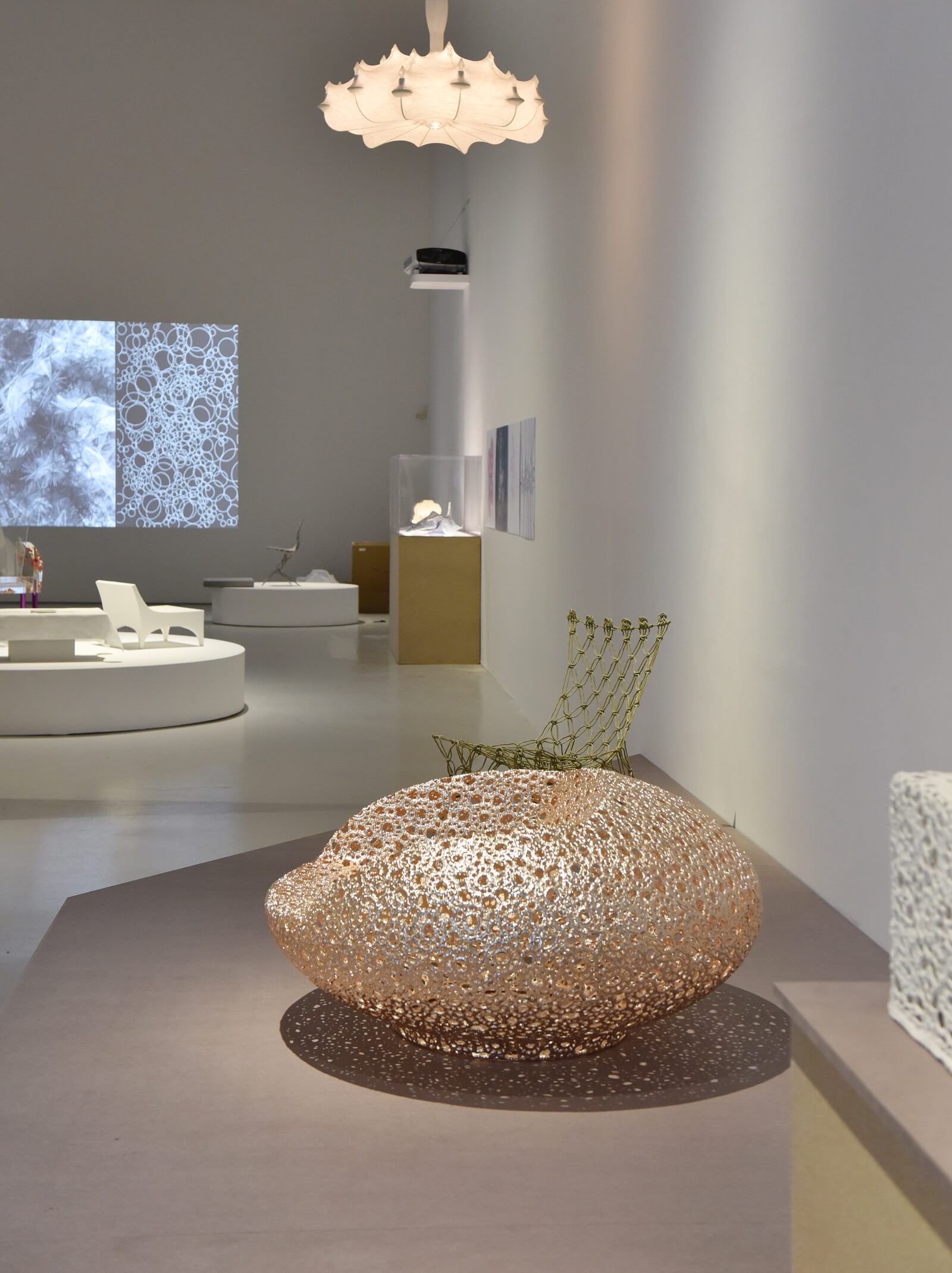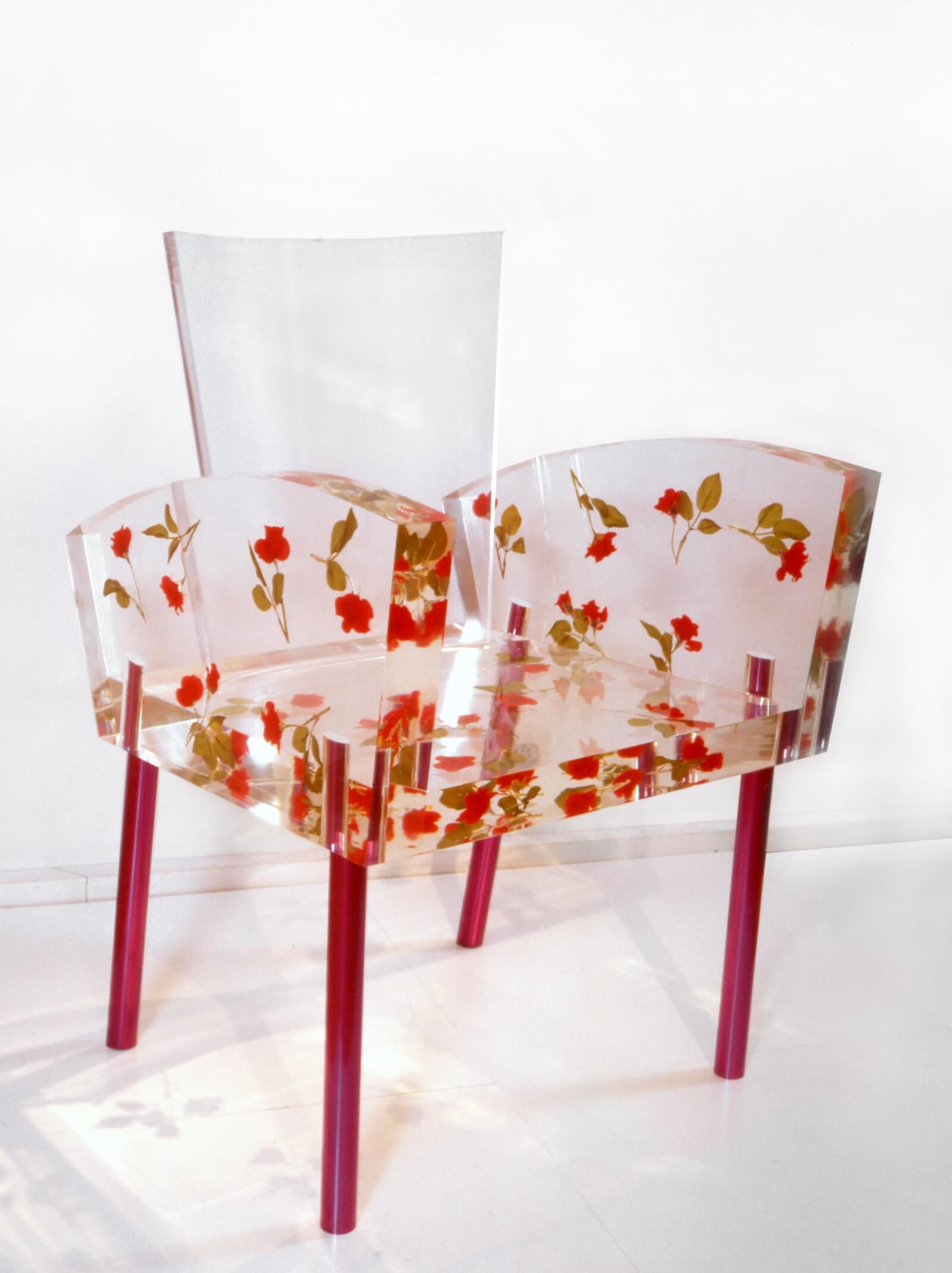Design et Merveilleux
Nature, software and master craftsmanship combined to produce a rich and complex showcase of design.
Musée d’Art Moderne et Contemporain, St-Etienne
1st December 2018 – 21st April 2019
THE WAYS IN which designers draw inspiration from nature and ornamentation came under the spotlight in the exhibition ‘Design et Merveilleux’ at the Musée d’Art Moderne et Contemporain in St-Etienne. Through more than 100 works, the show looked at how designers have incorporated natural elements into their work and, more recently, replicated organic and decorative forms by harnessing digital technology.

Andrea Branzi, ‘Banc Animali domestici’, 1985
COURTESY: Yves Bresson /MAMC+
The exhibition opened with a piece by Andrea Branzi, the 80-year-old Italian architect and designer. It was a lacquered wooden bench with birch branches protruding upwards to form a back rest, its title ‘Banc Animali domestici’ (1985) suggesting a domestication of nature. “It was a total break in design to integrate nature in a literal way as a structural element and this [idea] became important in the 1980s,” said Marie-Ange Brayer of Branzi’s work. Brayer is the senior design curator at Centre Pompidou and organised this exhibition with Martine Dancer-Mourès, senior curator at the St-Etienne museum. Brayer continued, “Then 26 years later, Benjamin Graindorge did the opposite by creating a bench that transforms itself into branches.” She was referring to the French designer’s ‘Fallen tree’ (2011) made from oak, its gravity balanced by a piece of glass.

Benjamin Graindorge/YMER&MALTA, ‘Fallen tree’, Collection Morning Mist, 2011
COURTESY: Benjamin Graindorge/YMER&MALTA
The next rooms of the exhibition contained examples of how contemporary designers have embraced technology to mimic biological and fractal processes. After his ‘Heatwave’ (2003) mural radiator made from rococo swirls of concrete for his graduation project at Design Academy Eindhoven in the Netherlands, Joris Laarman digitally produced ‘Bone Chair’ (2006), its seamless skeletal parts inspired by bone growth. The pioneering designer, who has constructed a pedestrian bridge in Amsterdam using robots, also employed 3D printing and welding to make ‘Adaptation Chair’ (2014), its branch-like intricacy referencing cell growth. In a similar vein there was the ethereal ‘Diamond Chair’ (2008) by Nendo (Japanese designer Oki Sato) – made by rapid prototyping – as well as San Francisco-based designer Andrew Kudless’ digitally-conceived ‘Chrysalis III’ (2012) made from cherry and poplar veneers. This evocation of cell-like multiplication found a resonance with Dutch designer Marcel Wanders’ ‘Bon Bon Chair’ (2010), the honeycomb-like patterns of its golden, curvilinear form made by crocheting rope.

Joris Laarman, ‘Adaptation Chair’, 2014
COURTESY: Joris Laarman Lab
The exhibition traced a back-and-forth conversation through the last three decades between non-digital and digital works – from masterful craftsmanship to technical wizardry

View of exhibition with Marcel Wanders, ‘Bon Bon Chair’, 2010, in the foreground
COURTESY: Charlotte Pierot
A poetic inclusion was Shiro Kuramata’s ‘Fauteil Miss Blanche’ (1989), its paper rose petals trapped in transparent acrylic resin, encapsulating the late Japanese designer’s dream to evoke an object floating. Another contemporary classic was Wendell Castle’s mahogany chair ‘Don Juan’ (2010), its seat morphing into looped armrests and legs, exemplifying how the American crafts movement’s founding father blurred the boundaries between sculpture and design.

Shiro Kuramata, ‘Fauteuil Miss Blanche’, 1989
COURTESY: Galerie Yves Gastou
Other designers have researched how engineering can engender a sculptural impression. British industrial designer Ross Lovegrove used cutting-edge composite engineering to make ‘The Gingko Carbon Table’ (2007), a carbon emulation of a three-leaf clover, its centre creasing into leaves.
The premise of the show came full circle in Mathias Bengtsson’s ‘Growth Table Titanium’ (2016). It’s named after how the Danish designer ‘grew’ the piece using computer software before 3D-printing the various spindly parts recalling intertwining branches that make up the legs. “He starts drawing fluid forms, then calculates the arborescent movement with software programming and sees algorithms and the object’s complexity developing on the screen, then 3D-prints the titanium pieces,” Brayer explained. This process of transformation – from Branzi integrating branches to Bengtsson using high-tech tools to evoke them – engages our relationship to the natural world whilst inducing the capacity to marvel.
Design et Merveilleux – exhibition at Musée d’Art Moderne et Contemporain, St-Etienne.



